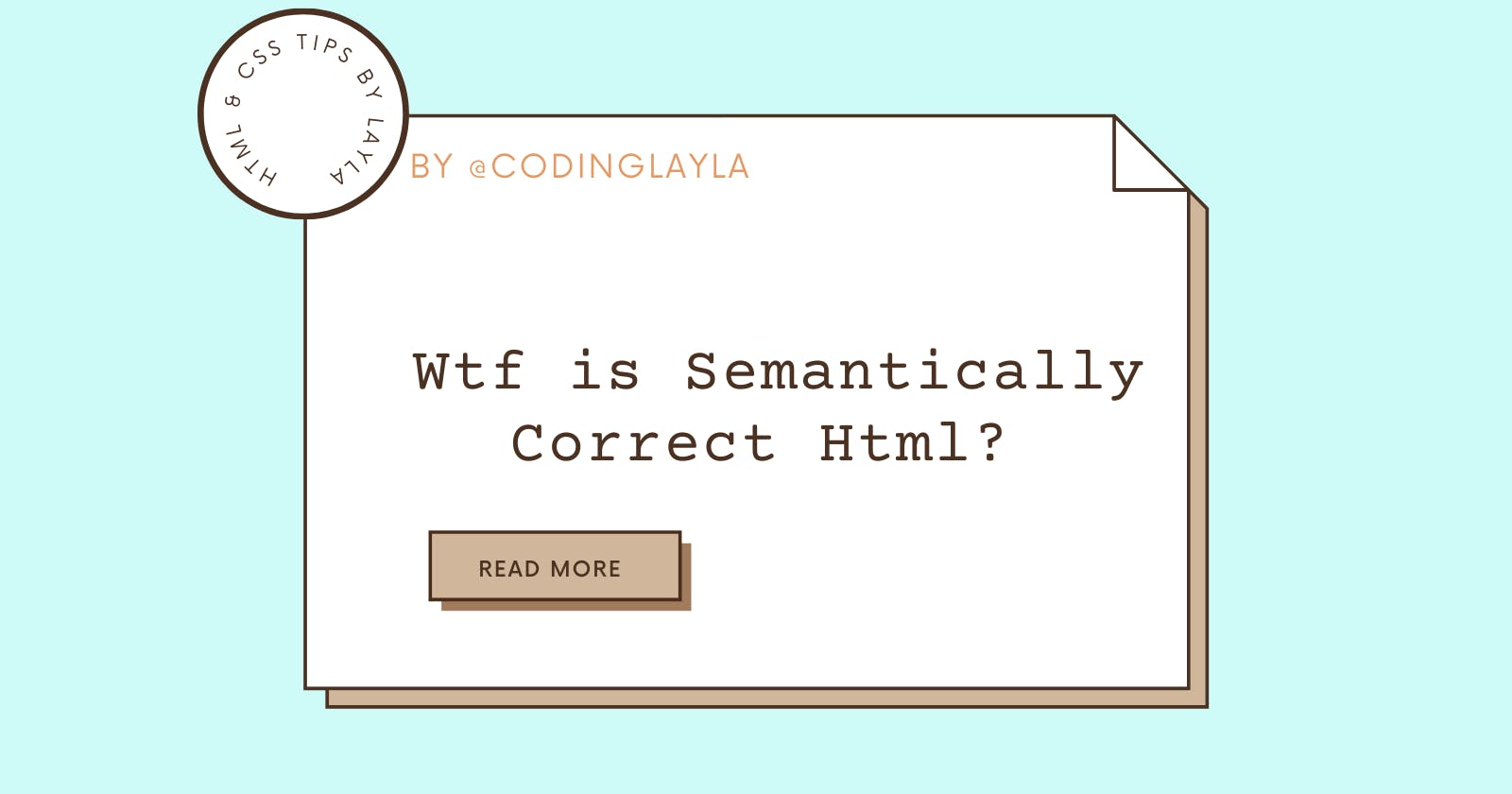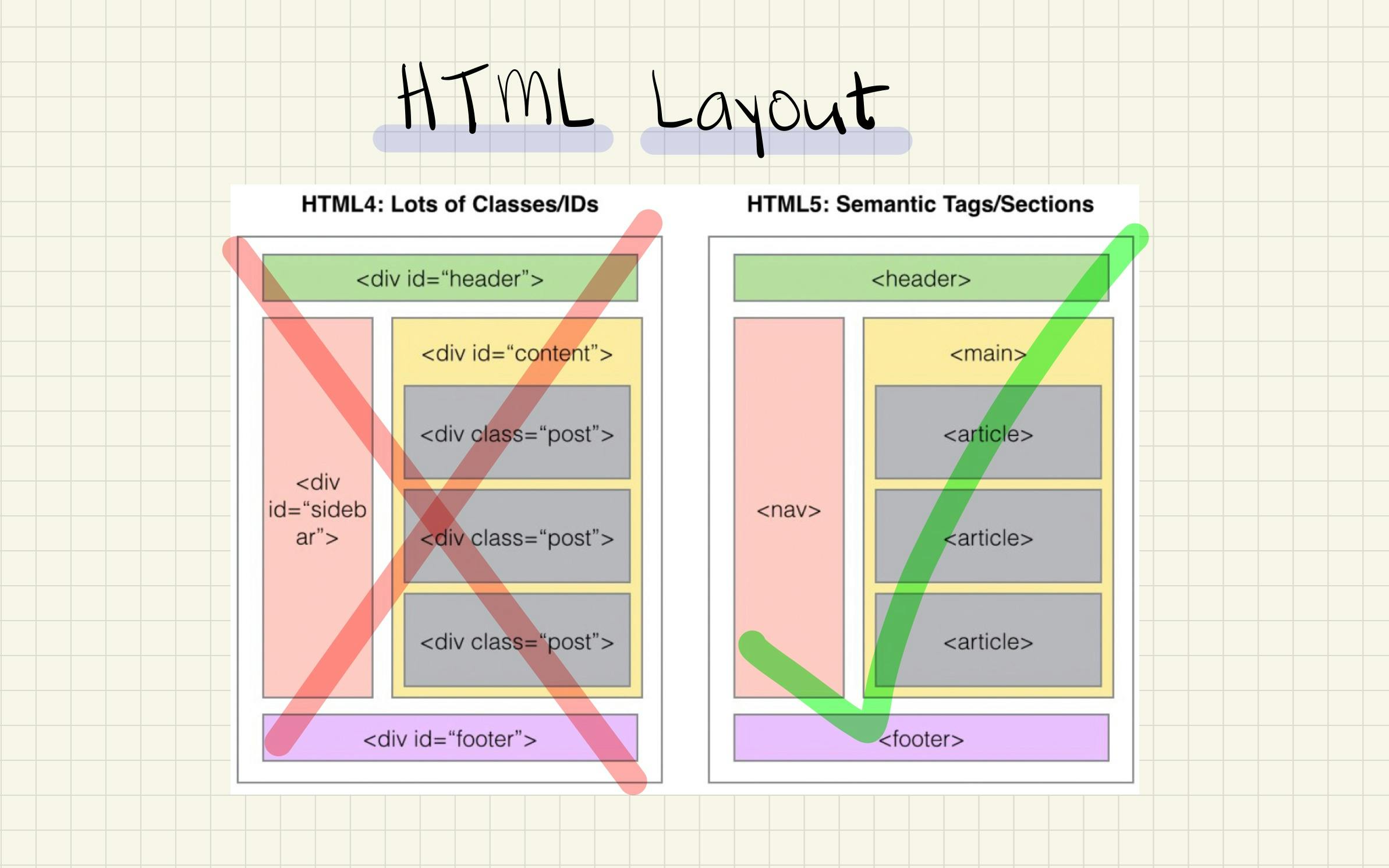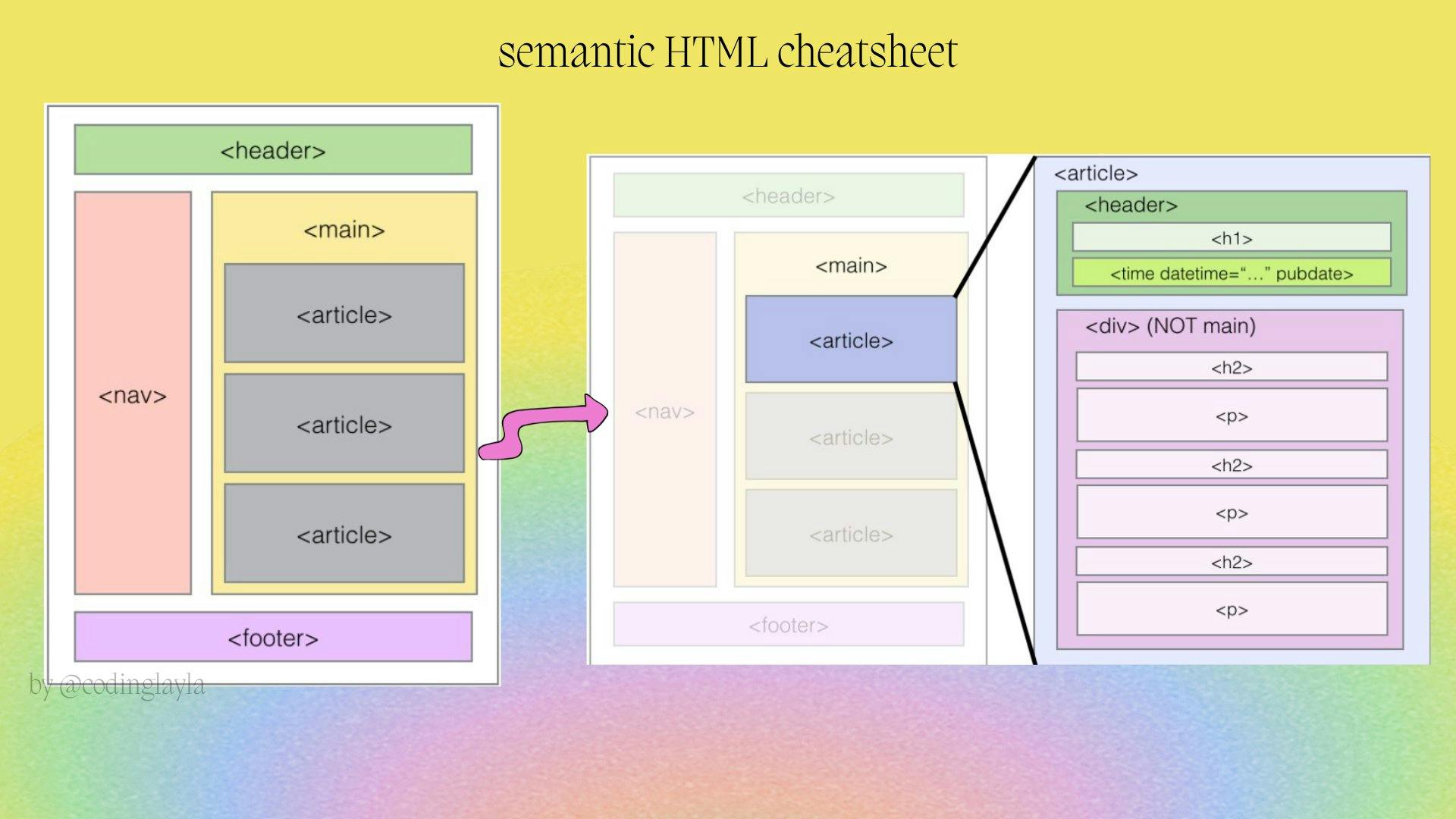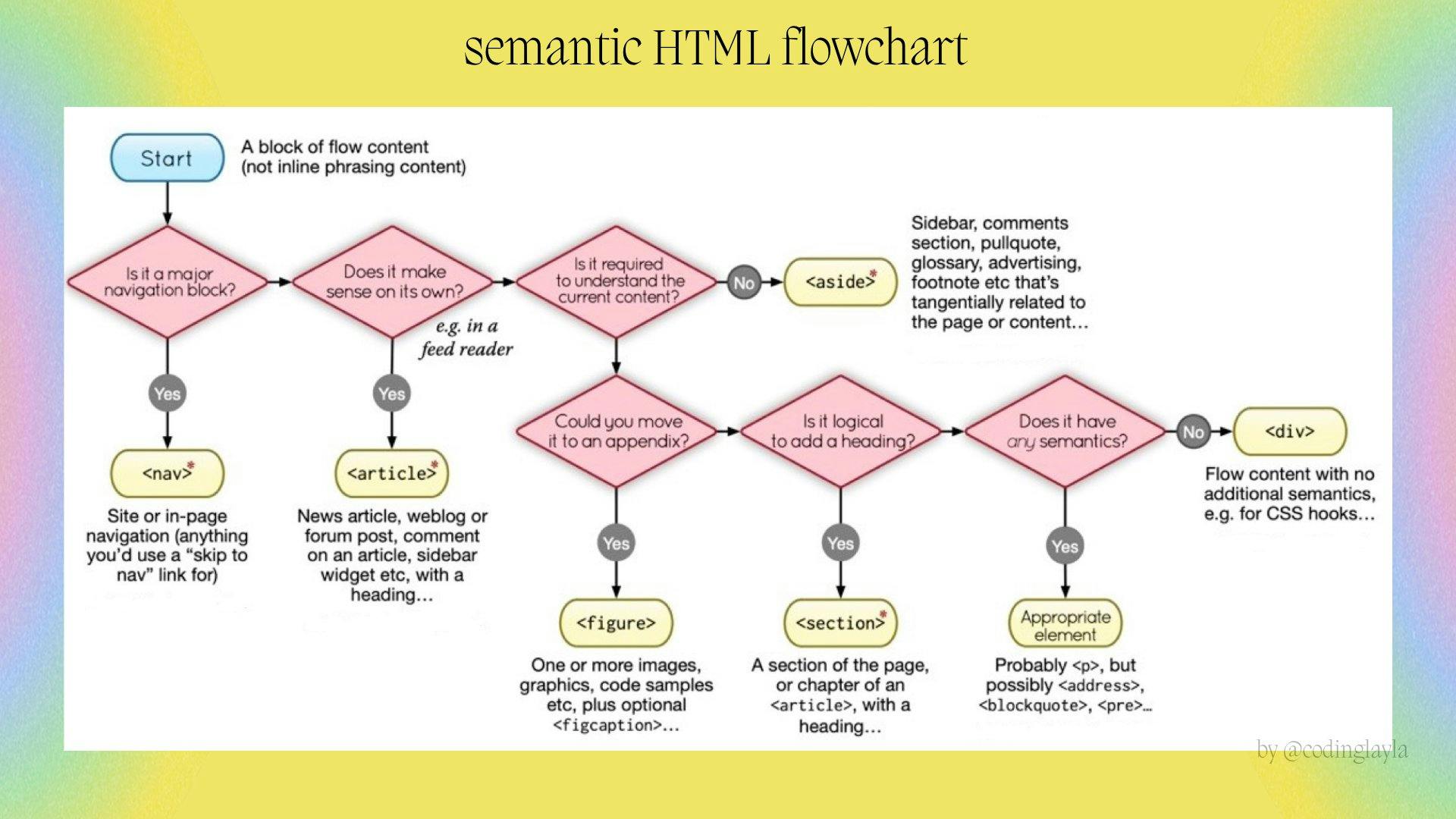What is Semantic HTML? 🤨

What's goooooood, coders! 😎 I've been crazy busy with homework for my Computer Science classes, but I wanted to talk about an important topic I've come across in my self-taught frontend journey: semantic HTML! 😍😍😍
Table of Contents 🤩
Wtf is 'Semantic HTML' 🤯More Easily Readable Code 🤗Increasing Accessibility 😋Using Semantic HTML Tags Correctly 🕺
What exactly is 'Semantic HTML'? 🤯
Good question 😉 let me break it down for ya: to write semantic HTML is to use elements in the correct way!
A semantic element clearly describes its content (between the tags) to both the browser AND the developer. 🚫 Simply using div's for your header, navbar, footer, sections, etc. is not good practice! 🚫
Let me elaborate further: when creating a header for your website/portfolio, some programmers might write them as: <div class='header> , <div id='header'>, <div class='head'> or simply <div>. (Or you can just use <header> 😉 ).
There are so many ways you could create a header element, and it does depend on the personal preference on the programmer...😜 BUT by creating a standard semantic element that's consistent throughout your entire project, it makes your code more readable and helps with debugging!
More Easily Readable Code w/ Semantic HTML 😋
Take a look at the block of code below ⬇️
Notice all the <div>'s?
<div id="header"></div>
<div class="section">
<div class="article">
<div class="figure">
<img>
<div class="figcaption"></div>
</div>
</div>
</div>
<div id="footer"></div>
Now take a look at this block of code below ⬇️
<header></header>
<section>
<article>
<figure>
<img>
<figcaption></figcaption>
</figure>
</article>
</section>
<footer></footer>
Do you see how I replaced all the <div>'s from the first block of code to their corresponding semantic tag? 🧐
Look how much easier the 2nd block of code is to read! 😎 This is a super small example, but as a programmer you could be reading through hundreds/thousands lines of code... the easier it is to read and understand that code, the easier it makes your job!
➡️ For example: using the tag <div>, there are multiple ways to create a header element, versus just using <header> consistently every time! Semantic HTML elements === consistent code 😍
Increase Accessibility with Semantic HTML Tags🤯
More easily accessible webpage for your users AND search engines! 😎
For sighted users, it’s easy to identify each part of a website. Form elements, headers, footers, and menus are all visually apparent.
BUT, for bots like Google’s spiders (before you make a Google search, these web crawlers gather information from hundreds of billions of webpages and organize it in the Search index), or a screen reader, these visual semantics aren’t as obvious.
By defining block-level elements with semantic elements, we can communicate to the search engines & screen readers what the elements are, so they can render them appropriately! 😛 Cool, right?
➡️ Here's an example: we don't declare italic elements with an <i> for italics anymore, (which is a purely visual change, without intrinsic meaning) but with an <em>, for emphasize.
On the screen, the browser will display text wrapped in an <em> in italics. But, on an audio device for the visually impaired, the text will be pronounced with a corresponding emphasis, just like a friend would say it. 😊❤️
Using Semantic HTML Tags Correctly 🤩
So, now that you know the basics of Semantic HTML tags, I bet you're ready to see them in action 😎 Below is a cheatsheet I've created to compare an incorrect HTML layout design with the semantically correct layout design:

Which one reminds you of your code? 😏
Now, let's take a look at an example of a semantically correct webpage layout ⬇️

I bet you're thinking "But, Layla...how will I know when to use which semantic HTML tag to use and when?". Well, my friend, I have THE GOLDEN FLOWCHART! Check it out below ⬇️

YOU'RE DONE! 🥳🥳🥳
I'll be creating more Hashnode blog posts about frontend development as I go through my self-taught frontend journey --if you enjoyed this post, follow me here on Hashnode and on Twitter! ❤️❤️ also feel free to save these cheat sheets in this article! I've made them for anyone who needs them 🥰🥰
DM me on Twitter or leave a comment if you get confused about any of these! 😜
